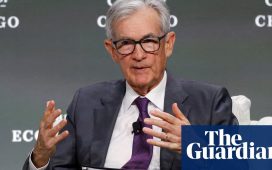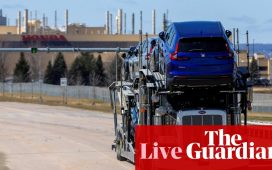Goldman Sachs analysts have identified a key measure for assessing the longevity of the AI trade: sales revisions. According to a Wednesday report, while the AI sector has experienced significant growth, particularly in the infrastructure phase, skepticism remains about its long-term profitability.
The report outlines four phases of the AI trade, with Phase 2, which includes companies involved in AI infrastructure such as semiconductor firms and cloud providers, showing the most robust performance.
“The average stock involved in the infrastructure build-out of AI (Phase 2) has returned 26% YTD,” the analysts noted. This phase has outperformed significantly, driven by the considerable capital expenditures from hyperscalers.
However, Goldman highlights that the AI trade is under growing scrutiny.
“Investors are increasingly concerned about the potential returns to the hyperscalers’ AI investment spending,” they wrote. While spending on AI infrastructure continues, there has been a noticeable lag in revenue growth projections for these investments.
The focus now shifts to the sales revisions of companies involved in later phases of AI adoption. Phase 3 companies, which are expected to monetize AI through software and IT services, have seen volatile performance.
“Stocks with enabled revenues (Phase 3) fell by 19% between February and May,” analysts highlighted, a decline that reflects investor uncertainty about the timeline and magnitude of returns from AI investments.
The durability of the AI trade hinges on the alignment of sales and earnings growth with the significant investments being made. Historical precedents from the Tech Bubble era illustrate the risks of overinvestment without corresponding revenue growth.
“Sales revisions will be a key indicator for investors to assess the durability of the AI trade,” the analysts emphasized.
As the second-quarter earnings season approaches, it will serve as a critical test for investor optimism built into current valuations. Companies involved in AI must demonstrate that their investments are translating into tangible sales and earnings growth to sustain their valuations. The report adds that early signs of failure in generating expected revenues could lead to a de-rating of these stocks.
Moreover, Goldman Sachs pointed out that “the AI capex cycle still pales in comparison to the Tech Bubble.” At the height of the Tech Bubble, TMT stocks were spending more than 100% of cash flows from operations on capex and R&D. In contrast, today’s leading TMT stocks, although seeing increased capex and R&D as a share of sales, have more contained spending at 72% of cash flows.
Investors are advised to closely monitor upcoming earnings reports and sales projections to gauge the long-term viability of AI-driven growth.
“The necessary earnings growth for today’s hyperscalers to maintain their recent average ‘ROI’ is in line with current consensus earnings growth,” the analysts noted, adding that a broad economic slowdown could also challenge the hyperscalers’ return on investment (ROI).







